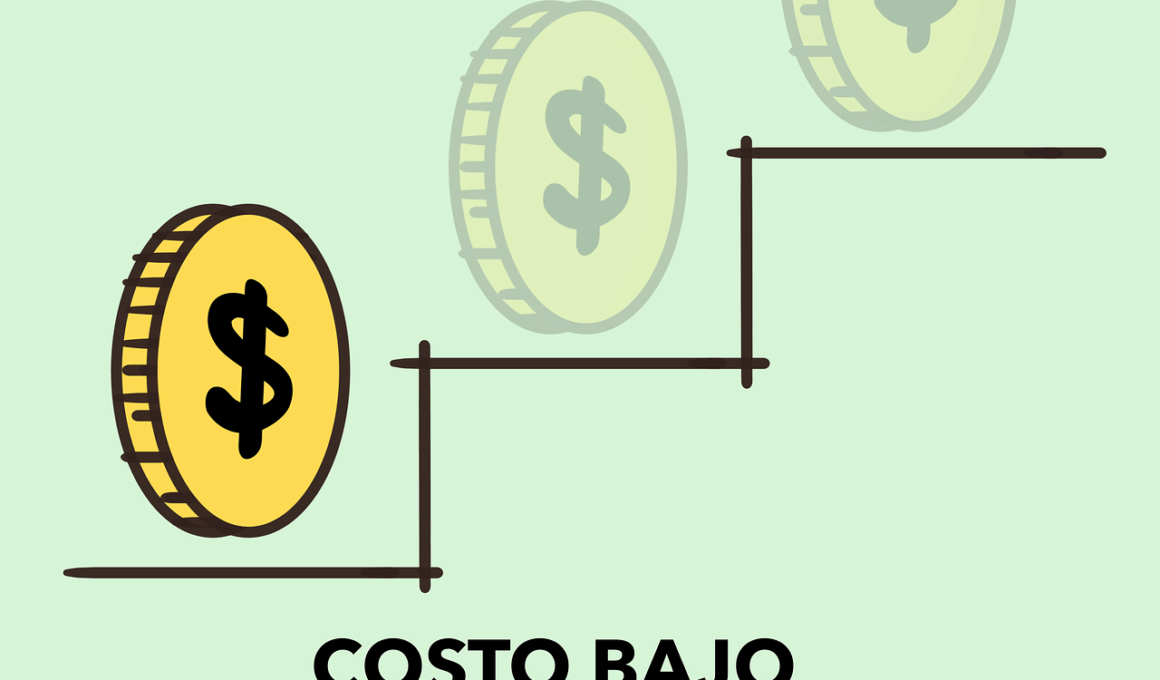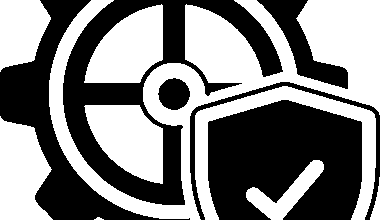Key Metrics in Cost Accounting and Reporting
Cost accounting is a pivotal area that focuses on capturing all costs associated with manufacturing or providing services. This type of accounting aims to help businesses analyze their expenses, enabling informed decision-making. An important metric in cost accounting is the cost per unit produced. This valuable figure helps businesses understand their profitability and operational efficiency. By tracking and analyzing cost per unit, organizations can efficiently assess their pricing strategies. Additionally, cost centers are essential for allocating expenses based on specific business segments. This allows managers to evaluate performance and implement targeted improvements. Highlighting the role of standard costing is crucial; it sets a baseline for evaluating performance against actual costs. Budget variances also serve as critical metrics, indicating where actual spending deviates from planned budgets. Such analyses provide insights into potential areas for cost savings. Lastly, break-even analysis determines the point at which total revenues equal total costs, providing a clear understanding of financial health. These metrics, when effectively implemented, can empower businesses to drive financial success while maintaining accountability.
Another vital aspect of cost accounting is the concept of direct and indirect costs, both vital components of comprehensive reporting. Direct costs refer explicitly to expenses linked to production, such as materials and labor. On the contrary, indirect costs encompass overhead expenses, including rent, utilities, and administrative salaries. Analyzing both cost types facilitates in-depth financial assessments, helping organizations make decisions on budgeting and forecasting. Another significant metric is labor cost variance, which examines discrepancies between planned and actual labor expenses. This analysis is crucial as labor often represents a substantial portion of total costs in manufacturing. Additionally, the contribution margin metric illustrates how much revenue remains after covering variable costs, providing insight into profitability. Moreover, cash flow projections based on cost reporting are essential for maintaining financial stability. Cash flow forecasts highlight potential shortfalls, guiding timely actions to secure liquidity. Moreover, effective reporting practices enhance communication within the organization, ensuring stakeholders understand financial realities. This comprehensive approach to cost analysis combines various metrics that inform strategic decisions while facilitating accountability across departments.
Reporting Techniques and Best Practices
A thorough understanding of reporting techniques in cost accounting assists in crafting insightful reports. One effective method is the use of dashboards, which visually display key performance indicators (KPIs). These interactive visuals enable managers to monitor costs in real-time, allowing for rapid adjustments to strategies as needed. Additionally, variance analysis reports highlight discrepancies between budgeted and actual figures, helping identify areas needing attention. Employing techniques like the balanced scorecard can link performance metrics to strategic objectives, creating a scenario where financial reports align with overall business goals. Furthermore, utilizing activity-based costing (ABC) provides detailed insights into the actual costs associated with specific activities, allowing for more accurate pricing and efficiency evaluations. Effective communication is vital; crafting reports that are concise and understandable ensures that all stakeholders can engage with the data presented. Using clear headers, bullet points, and summary sections enhances the readability of reports, promoting timely decision-making. Implementing these best practices can significantly elevate the quality and usefulness of cost-reports, facilitating better strategic planning and execution across the organization.
It is also important to leverage technology in modern cost accounting practices. Advanced accounting software provides tools for automating data collection and analysis. Automation not only reduces errors but also saves valuable time that can be invested in strategic analysis. Cloud-based solutions facilitate real-time access to financial data from anywhere, enhancing collaboration among teams. Moreover, artificial intelligence (AI) and machine learning (ML) technologies can be applied to predict future costs based on historical data. Implementing predictive analytics in cost accounting empowers organizations to navigate unpredictable scenarios effectively. Periodic training on these technologies is essential for maximizing their effectiveness. Continuous education ensures that staff remain proficient in using accounting software and leveraging analytical tools. In addition, integrating cost data with other business functions—such as marketing and supply chain management—enables more accurate total costs assessments. This holistic approach facilitates a comprehensive understanding of how various operations impact overall profitability. Ultimately, businesses that embrace technology in their cost accounting processes stand to gain a competitive edge in the evolving marketplace, ensuring efficient and effective cost management practices.
Evaluating Metrics for Continuous Improvement
Regularly evaluating key metrics is crucial for continuous improvement in cost accounting. Setting benchmarks and performance indicators allows organizations to identify trends over time. Employing methods such as the Plan-Do-Check-Act (PDCA) cycle can facilitate ongoing advancements, enabling businesses to respond proactively to cost fluctuations. Furthermore, fostering a culture of cost awareness among employees helps embed strategic thinking into daily operations. Through regular training and workshops, teams can better understand how their actions influence overall costs. Encouraging feedback within teams also promotes collaborative efforts towards cost-reduction initiatives, fostering innovation in problem-solving. Another best practice involves conducting periodic internal audits to ensure compliance with reporting standards. These audits can identify discrepancies and potential areas for improvement, significantly enhancing trust in financial reports. Additionally, periodic explorations of industry benchmarks can reveal best practices, ensuring that organizations remain competitive. Collaborating with industry peers through networking or specialized forums can expand knowledge and insights into effective cost accounting practices. Ultimately, a commitment to evaluating and improving the metrics in cost accounting will result in sustainable growth and operational excellence.
Understanding the impact of regulatory standards is another key consideration in cost accounting and reporting. Various legal frameworks dictate how organizations should report costs, affecting not only compliance but also financial strategy. Adherence to standards such as Generally Accepted Accounting Principles (GAAP) or International Financial Reporting Standards (IFRS) is essential for maintaining transparency in financial reporting. Failure to comply with these standards can lead to significant legal consequences and eroded stakeholder trust. Cost accountants must stay updated on regulatory changes affecting cost accounting principles. Implementing internal controls aids in ensuring compliance and integrity in reporting practices. Emphasizing the role of ethical cost allocation aligns with broader corporate governance standards. Furthermore, regular communication with auditors and financial professionals provides additional layers of oversight. This relationship fosters a culture of accountability while ensuring that all cost entries are accurately represented. A robust understanding of regulatory compliance not only mitigates risks but also enhances the accuracy and credibility of financial reports. Therefore, investing in compliance education and training is invaluable for achieving long-term financial success and reliability.
Conclusion: Driving Success with Cost Metrics
In conclusion, effectively leveraging key metrics in cost accounting and reporting represents a substantial opportunity for organizational success. From accurately assessing direct and indirect costs to implementing automated systems, these practices shape informed decision-making. Continuous evaluation of metrics such as cost per unit, variances, and contribution margins can drive proactive financial strategies. Embracing technological advancements not only enhances reporting capabilities but also empowers businesses to adapt to market changes rapidly. Furthermore, evaluating standard practices against regulatory requirements ensures compliance and trustworthiness in reporting. It is essential that organizations cultivate a shared understanding of cost accounting among all employees to nurture a culture of accountability. Only through unified efforts can businesses effectively strategize against financial unpredictabilities. Thus, as companies continuously refine their cost reporting processes, they can uncover new pathways to enhance profitability and operational efficiency. Overall, culling insights from established metrics enables businesses to navigate complexities, clarify objectives, and ultimately thrive in a competitive landscape. The diligent application of cost accounting practices paves the way for sustainable growth and profitable ventures in the future.
Finally, embracing change in cost accounting methods allows organizations to keep pace with evolving market dynamics. The introduction of new technologies, shifts in consumer behavior, and competitive forces demand adaptive accounting practices. Leaders must be willing to invest in training and development to sustain growth, ensuring their teams are equipped to handle emerging trends. Moreover, fostering a continuous learning environment enhances operational resilience, empowering employees to identify opportunities for innovation. Regularly scrutinizing key metrics ensures that all stakeholders remain aligned with business objectives, unlocking value across departments. Additionally, engaging with industry developments can offer fresh perspectives that refine traditional accounting practices. By participating in professional organizations or forums, accountants can gain insights that enhance their methodologies. This strategy also aids in knowledge sharing, reinforcing the overall industry standard for cost reporting. Organizations that remain committed to advancing their cost accounting processes are better positioned to navigate the uncertainties of the financial landscape. Therefore, the integration of robust metrics and openness to change will solidify a company’s long-term success while optimizing its cost management approaches.


